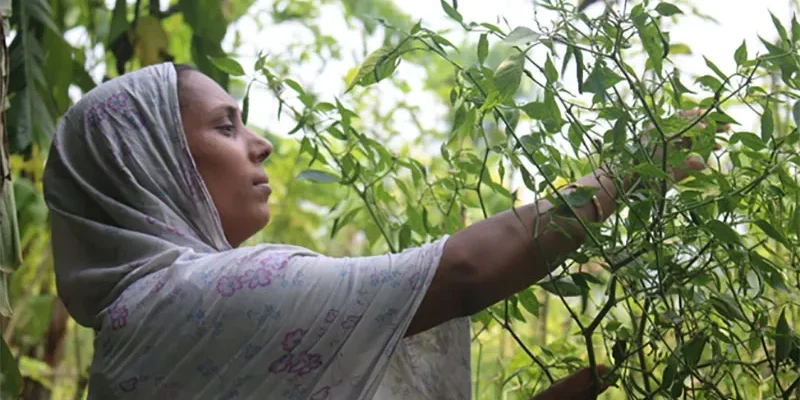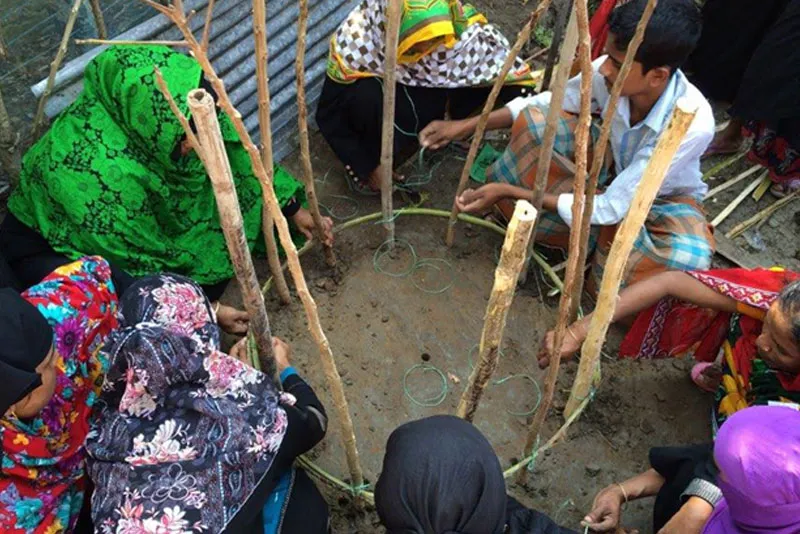
Cultivating vegetables in saline-prone areas is a significant challenge for farmers due to high soil salinity. However, the Soil Vegetable Tower offers an innovative solution, enabling year-round vegetable farming even under such difficult conditions. This method has proven to be highly effective and sustainable, particularly in the southern coastal regions of Bangladesh, thanks to a successful project initiated by WorldFish Bangladesh. Let’s explore more about this groundbreaking approach.
What is a Soil Vegetable Tower?
In Bangladesh’s southern coastal districts, soils often become saline, and areas like Barishal and Jhalokathi are regularly flooded by tidal waters. While saline soil can support some vegetable cultivation during the monsoon season, in winter and summer, the increased salinity makes farming extremely difficult. Additionally, waterlogged areas further complicate traditional farming methods.
In such challenging conditions, building raised vertical garden structures offers a practical solution. By creating circular frameworks using bamboo and tree branches, filling them with soil, and planting vegetables on the elevated surface and sides, farmers can adapt to climate change impacts and continue producing vegetables. This vertical method has emerged as a game-changer for farmers facing these environmental challenges.
The Success Story of WorldFish Bangladesh
Since 2016, WorldFish Bangladesh, under their Climate Change, Agriculture, and Food Security Project, has been promoting the Soil Vegetable Tower concept in districts like Jhalokathi, Pirojpur, Bagerhat, and Satkhira. Led by Project Director Md. Emdad Hossain, this research and scaling initiative has shown promising results, providing farmers with an effective cultivation strategy.

Objectives of the Vegetable Tower:
- Vegetable cultivation in saline soils
- Farming in waterlogged or drought-affected areas
- Maximizing vegetable production in limited space
- Early-season vegetable cultivation
Materials Required to Build a Vegetable Tower:
Most of the materials are easily available around the home or farm. The required materials include:
- 10 bamboo poles
- 10 young branches (locally known as Kafila)
- 5 split bamboo pieces
- Plastic sheet
- Brick chips
- Soil
- Cow dung
- Rotten or dry water hyacinth
- Rope
- 6-inch diameter plastic pipe
- Fertilizers: Urea – 400g, TSP – 250g, MOP – 250g
How to Build a Soil Vegetable Tower:
- Select a site and draw a circle with a radius of 45 cm.
- Place bamboo poles and Kafila branches alternately, maintaining a 25 cm gap between them, and secure them in a circular frame using split bamboo.
- Firmly anchor the poles in soft soil, then line the inside of the structure with a plastic sheet.
- Fill the bottom with a mixture of soil, cow dung, and fertilizer up to a height of one foot.
- Insert a plastic pipe in the center and fill it with brick chips.
- Surround the pipe with the soil mixture, filling the tower structure.
- Once the tower is filled, remove the pipe. Alternatively, use a banana plant stem in place of a pipe; once the soil is filled and the stem is removed, the cavity can be filled with brick chips.

What Types of Vegetables Can Be Grown?
Climbing vegetables like sponge gourd, ridge gourd, bottle gourd, pumpkin, bitter gourd, snake gourd, cucumber, long beans, hyacinth beans, and ash gourd can be planted on the top. Around the sides, you can grow chili, okra, tomato, and Malabar spinach.
Planting Method Around the Tower:
You can plant seeds or seedlings on the top and along the sides of the tower. If side plants lean, support them with sticks.
Fertilizer and Watering System:
Pour water mixed with fertilizer into the central cavity filled with brick chips. This allows water and nutrients to spread evenly throughout the soil, ensuring healthy plant growth.
Written by: Harun-or-Rashid and Md. Emdad Hossain

